How to prevent gastric ulcers in pigs?
The prevalence of gastric ulcers in pigs is a subject that has been getting a lot of attention in recent years. It is classified as severe inflammation, lesions or actual ulceration of the upper, inner part (par oesophagus) of the pig’s stomach. Unlike the rest of the pig stomach, this area is unprotected by a mucus coating and is therefore less able to withstand acidic conditions. This leads to the formation of stomach lesions and potential ulcers. Not only do stomach problems reduce production, it also impairs health and welfare of pigs.
A review in Denmark showed that 60 – 80% of all pigs monitored scored signs of gastric lesions, hyperkeratosis, ulceration or scarring, indicating previous lesions (Canibe et al., 2016). This is further supported by the research of Friendship (2004). This publication indicates that the incidence of stomach lesions and ulcers might be as high as 80%.
Evidence is available, indicating that the prevalence of gastric problems is even higher in sows. The previously mentioned study by Canibe and co-workers (2016), carried out by Aarhus University in Denmark, reviewed that between 15 – 79% of sows have gastric ulcers and/or scars. It is concluded that sows show a higher ulceration prevalence than finisher pigs.
Possible gastric ulcers issues are likely to be increased in times of stress and periods of low feed intake. Stomach ulcers may lead to increased stress, reduced feed intake and possibly reduced pig performance and longevity in the sow herd.
Prevalence of gastric lesions in pigs by region (source: Canibe et al., 2016)

Causes and symptoms of gastric ulcers
The exact cause of gastric ulcers in pigs is not fully understood. However, it has been associated with particle size and pelleting of diets, feed availability, or other events leading to high stress levels within a herd (MSD Vet Manual 2014). There is a general belief that the increase in gastric ulcers during the 1950s was associated with intensification of pig production. For example improved leaner genetic lines, greater stocking densities, fine grinding and pelleting of feed. The continued intensification during the last decades is thought to have resulted in a further increase in the occurrence and prevalence of gastric problems.
Symptoms of stomach ulceration problematics in pigs include restless behaviour, loss of body condition, poor or variable appetites, black and tarry faeces and anaemia. In extreme cases, haemorrhaging or sudden deaths may occur, especially in pigs of 50 – 60 kg live weight. Of course, this results in significant economic losses for farmers and impaired welfare and health for the animals. There is little doubt that gastric lesions or ulcerations cause discomfort or pain in pigs, but it remains unclear from what severity the pigs will start showing symptoms of this discomfort. Hence, it can be questioned whether pain and agitation caused by gastric problems can trigger and be associated with behavioural problems such as tail, flank, or ear biting.
It is well recognized that feeding coarsely ground meal or higher fibre diets can reduce the incidence of ulcerations. This is most likely a result of less fluid in the stomach and firmer digesta and a reduced gastric emptying rate. Hence, this results in the fibre creating an actual barrier for stomach acid encountering the pars oesophagus region. However, this strategy could result in an impaired feed utilization with a consequent lower animal productivity and increased environmental load (Millet et al., 2012). That makes this strategy unpopular in modern intensive pig farming. Strategies which help reduce the incidence of ulceration while still maintaining the most efficient output are the desired solution for modern, high-producing pig farms.
Dietary factors reported to increase the risk of gastric ulcers in pigs:
- finely ground feed
- heat treatment
- pelleting
- wheat, maize
- low levels of vitamin E, selenium, zinc
- high levels of unsaturated fat
- high levels of copper
Management factors reported to increase the risk of gastric ulcers in pigs:
- stress
- crowding
- transport
- mixing with new pigs
- ad-libitum feeding
- fasting / irregular feeding
- confinement
CeltiCal reduces the risk for gastric ulcers & inflammation
CeltiCal is a 100% natural animal feed ingredient. It meets the nutrient requirements for nutrition in sows, piglets and fattening pigs. The basis is a marine mineral complex with 74 bioavailable minerals.
CeltiCal has proven its efficacy in over twenty swine specific in vivo studies and counting. Research has been carried out in different regions worldwide with fattening pigs, sows and piglets. The results show that CeltiCal consequently increases the number of healthy stomachs and reduces the severity of gastric lesions and inflammation. At the same time CeltiCal enhances growth performance, improves feed conversion ratio, and reduces mortality.
This is also of great importance for high prophylactic sow herds. Piglets weaned per sow and litter weights weaned per sow are at the rise. It is important to reduce the risk for gastric inflammation and lesions in order to increase production, health, welfare and sustainability of these sows.
In 2006, the Dutch research institute Schothorst Feed Research (SFR) found a reduction of gastric ulcers and inflammation with CeltiCal. Besides, they also measured an improved feed conversion ratio in fattening pigs.
In a field trial carried out in Co. Wexford in Ireland, Celtical also increased the amount of healthy stomachs found. After the exerpimental period, CeltiCal was taken out of the diets again. Pigs went back on their previous diets and stomachs of pigs were examined again after a period of time. It showed that the amount of pigs suffering from stomach inflammation and ulcers had increased again and was even higher than before CeltiCal had been used. This shows the clear effectiveness of CeltiCal to support a healthy stomach function, reduce gastric problems and improve animal health and welfare at the same time. For more research data and details, please contact the team.
The video shows that the gastrointestinal tract of a pig is subject to large pH fluctuations. Chiang et al. (2008) published in the Journal of Animal Sciences that there is also a correlation between meal size and pH. Higher feed intake results in an increased pH > 3.5 for a longer time. CeltiCal helps to optimise the pH along the digestive tract. Hence, overall feed utilization is improved. CeltiCal supports digestion and a healthy gut. This will optimise enzyme activity and improves the conversion of micro and macro nutrients of the diet.
Video: pH development in gastrointestinal tract of a pig
CeltiCal optimises pH in the gastrointestinal tract
The inclusion of CeltiCal in pig diets controls the negative impact of gastric acid in the very upper part of the pig’s stomach. Hence, CeltiCal protects the par oesophagus region from acid erosion and ulceration. The matrix of the bioavailable marine minerals starts reacting and thus soothing any affected area in the upper part of the stomach very rapid after the pig eats. Subsequently, this leads to less buffering material in the rest of the digestive tract. As a result, CeltiCal has a positive contribition to the Acid Binding Capacity (ABC) of a pig diet in the digestive system.
This is also demonstrated by Steenkamp and co-workers (2014) in a trial with pigs starting at 27 kg live weight up to 70 kg and a ten week feeding period. The report confirms that CeltiCal in a pellet and meal diet improved stomach health and reduced gastric ulcers. Also, stomach pH in both diets was reduced when pigs are fed CeltiCal. The pH along the rest of the digestive tract was also more acidic. This should have further benefits for animal gut health and a better balance of microbial populations.
Data confirms that a healthier gut function with CeltiCal improved feed conversion ratio (FCR). For the pellet diet FCR reduced by 0.10 pts to 2.42 with CeltiCal. And also the meal diet improved FCR by 0.13 pts to 2.65 with CeltiCal.

CeltiCal increased the percentage of healthy stomachs and reduced gastric ulcers (source: Steenkamp et al., 2014)

CeltiCal optimises the pH in the gastrointestinal tract (source: Steenkamp et al., 2014)
Conclusions
In summary, it could be concluded that gastric ulcers are a significant challenge in pig herds, which must be managed to sustain Performance Excellence and animal welfare. Over twenty research papers specific for our marine minerals and pig application have demonstrated the very clear potential in reducing the occurrence and severity of stomach lesions and gastric ulcers. A healthy stomach function leads to Gut Excellence.
In return, pig producers and hog farmers get an easy to manage high performing herd with relaxed animals. CeltiCal enables to optimise feed conversion ratio and support animal welfare at the same time.
CeltiCal offers nutritional solutions for:
- gut health, reduce inflammation and gastric ulcers
- long term optimum pH in the swine digestive system
- animal welfare, reduce stress level in swine
- increase pig production efficiency and sow longevity
The report of Steenkamp (2014) is published by Stellenbosch University Library. Download the full report here and get powered by our science.

Related articles
 https://celticseaminerals.com/wp-content/uploads/2021/02/Transition-cow-Acid-Buf-CSM-800x600-1.png
600
800
Patricia
https://celticseaminerals.com/wp-content/uploads/2020/01/Celtic_13.png
Patricia2021-02-08 15:05:032023-03-02 13:35:35Transition Cow Management
https://celticseaminerals.com/wp-content/uploads/2021/02/Transition-cow-Acid-Buf-CSM-800x600-1.png
600
800
Patricia
https://celticseaminerals.com/wp-content/uploads/2020/01/Celtic_13.png
Patricia2021-02-08 15:05:032023-03-02 13:35:35Transition Cow Management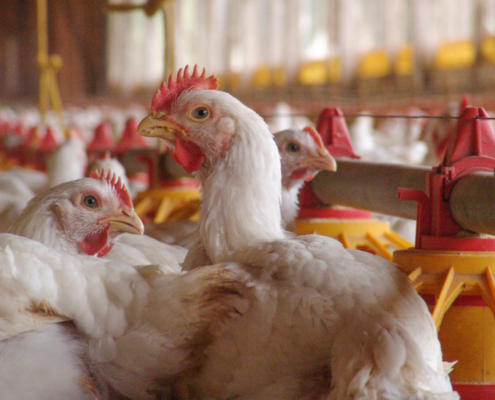 https://celticseaminerals.com/wp-content/uploads/2020/11/CSM-CeltiMin-layers-featured-image-webpage-800x600-1.png
600
800
Patricia
https://celticseaminerals.com/wp-content/uploads/2020/01/Celtic_13.png
Patricia2020-11-03 15:41:302023-03-02 13:36:21How to prevent eggshell quality problems?
https://celticseaminerals.com/wp-content/uploads/2020/11/CSM-CeltiMin-layers-featured-image-webpage-800x600-1.png
600
800
Patricia
https://celticseaminerals.com/wp-content/uploads/2020/01/Celtic_13.png
Patricia2020-11-03 15:41:302023-03-02 13:36:21How to prevent eggshell quality problems?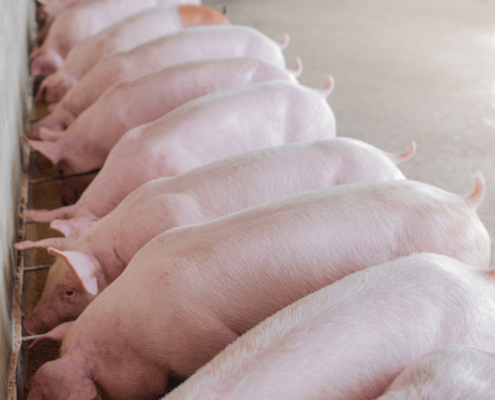 https://celticseaminerals.com/wp-content/uploads/2020/09/CSM-featured-image-gastric-pH-800x600px.png
600
800
Patricia
https://celticseaminerals.com/wp-content/uploads/2020/01/Celtic_13.png
Patricia2020-09-20 15:10:092023-03-02 13:36:48How gastric pH affects pig gut health
https://celticseaminerals.com/wp-content/uploads/2020/09/CSM-featured-image-gastric-pH-800x600px.png
600
800
Patricia
https://celticseaminerals.com/wp-content/uploads/2020/01/Celtic_13.png
Patricia2020-09-20 15:10:092023-03-02 13:36:48How gastric pH affects pig gut health https://celticseaminerals.com/wp-content/uploads/2020/07/CSM-featured-image-heat-stress-asia.png
600
800
Patricia
https://celticseaminerals.com/wp-content/uploads/2020/01/Celtic_13.png
Patricia2020-07-28 08:45:572023-03-02 13:38:15Heat stress in dairy cows
https://celticseaminerals.com/wp-content/uploads/2020/07/CSM-featured-image-heat-stress-asia.png
600
800
Patricia
https://celticseaminerals.com/wp-content/uploads/2020/01/Celtic_13.png
Patricia2020-07-28 08:45:572023-03-02 13:38:15Heat stress in dairy cows https://celticseaminerals.com/wp-content/uploads/2020/06/CSM-featured-image-feed-efficiency-800x600px.png
600
800
Patricia
https://celticseaminerals.com/wp-content/uploads/2020/01/Celtic_13.png
Patricia2020-06-30 12:28:302023-03-02 13:39:19Improving feed efficiency in dairy cows
https://celticseaminerals.com/wp-content/uploads/2020/06/CSM-featured-image-feed-efficiency-800x600px.png
600
800
Patricia
https://celticseaminerals.com/wp-content/uploads/2020/01/Celtic_13.png
Patricia2020-06-30 12:28:302023-03-02 13:39:19Improving feed efficiency in dairy cows https://celticseaminerals.com/wp-content/uploads/2020/06/CSM-featured-image-piglets-sleeping-800x600px.png
600
800
Patricia
https://celticseaminerals.com/wp-content/uploads/2020/01/Celtic_13.png
Patricia2020-06-23 15:33:152023-03-02 13:40:54How to reduce pig aggression?
https://celticseaminerals.com/wp-content/uploads/2020/06/CSM-featured-image-piglets-sleeping-800x600px.png
600
800
Patricia
https://celticseaminerals.com/wp-content/uploads/2020/01/Celtic_13.png
Patricia2020-06-23 15:33:152023-03-02 13:40:54How to reduce pig aggression? https://celticseaminerals.com/wp-content/uploads/2020/06/CSM-featured-image-beef-cattle-charolais-800x600px.png
600
800
Patricia
https://celticseaminerals.com/wp-content/uploads/2020/01/Celtic_13.png
Patricia2020-06-16 07:25:322023-03-02 13:41:17Fiber digestion drives beef cattle performance
https://celticseaminerals.com/wp-content/uploads/2020/06/CSM-featured-image-beef-cattle-charolais-800x600px.png
600
800
Patricia
https://celticseaminerals.com/wp-content/uploads/2020/01/Celtic_13.png
Patricia2020-06-16 07:25:322023-03-02 13:41:17Fiber digestion drives beef cattle performance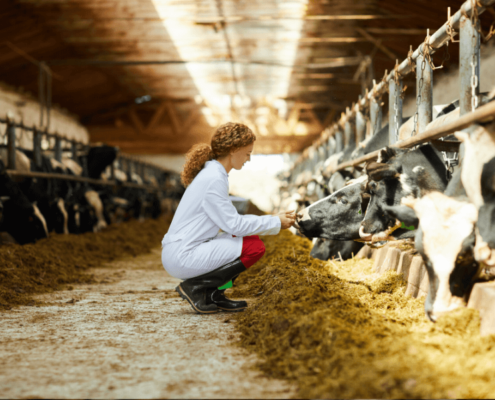 Celtic Sea Minerals
https://celticseaminerals.com/wp-content/uploads/2020/06/CSM-featured-image-dairy-cow-neville-800x600px.png
600
800
Patricia
https://celticseaminerals.com/wp-content/uploads/2020/01/Celtic_13.png
Patricia2020-06-01 20:53:282023-03-02 13:44:46How a rumen buffer drives dairy performance
Celtic Sea Minerals
https://celticseaminerals.com/wp-content/uploads/2020/06/CSM-featured-image-dairy-cow-neville-800x600px.png
600
800
Patricia
https://celticseaminerals.com/wp-content/uploads/2020/01/Celtic_13.png
Patricia2020-06-01 20:53:282023-03-02 13:44:46How a rumen buffer drives dairy performance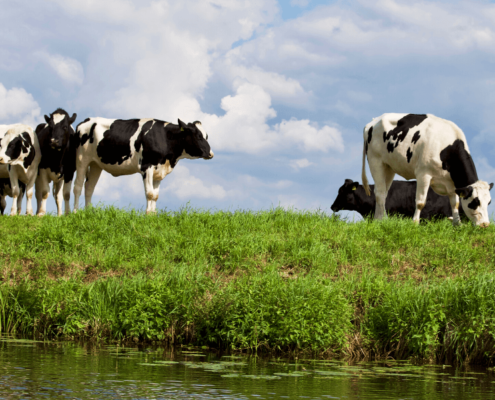 https://celticseaminerals.com/wp-content/uploads/2020/05/CSM-featured-image-holstein-cow-gras-800x600px.png
600
800
Patricia
https://celticseaminerals.com/wp-content/uploads/2020/01/Celtic_13.png
Patricia2020-05-24 21:54:212023-03-02 13:45:11How to reduce the risk for grass staggers?
https://celticseaminerals.com/wp-content/uploads/2020/05/CSM-featured-image-holstein-cow-gras-800x600px.png
600
800
Patricia
https://celticseaminerals.com/wp-content/uploads/2020/01/Celtic_13.png
Patricia2020-05-24 21:54:212023-03-02 13:45:11How to reduce the risk for grass staggers? https://celticseaminerals.com/wp-content/uploads/2020/05/CSM-featured-image-pig-nose-800x600px.png
600
800
Patricia
https://celticseaminerals.com/wp-content/uploads/2020/01/Celtic_13.png
Patricia2020-05-12 22:21:192023-03-02 13:46:30How to prevent gastric ulcers in pigs?
https://celticseaminerals.com/wp-content/uploads/2020/05/CSM-featured-image-pig-nose-800x600px.png
600
800
Patricia
https://celticseaminerals.com/wp-content/uploads/2020/01/Celtic_13.png
Patricia2020-05-12 22:21:192023-03-02 13:46:30How to prevent gastric ulcers in pigs? Celtic Sea Minerals
https://celticseaminerals.com/wp-content/uploads/2020/04/CSM-Iceland-Marine-Minerals.png
600
800
Patricia
https://celticseaminerals.com/wp-content/uploads/2020/01/Celtic_13.png
Patricia2020-04-20 07:15:212023-03-02 13:48:33Marine Minerals Nutrition Platform
Celtic Sea Minerals
https://celticseaminerals.com/wp-content/uploads/2020/04/CSM-Iceland-Marine-Minerals.png
600
800
Patricia
https://celticseaminerals.com/wp-content/uploads/2020/01/Celtic_13.png
Patricia2020-04-20 07:15:212023-03-02 13:48:33Marine Minerals Nutrition Platform Celtic Sea Minerals
https://celticseaminerals.com/wp-content/uploads/2020/04/CSM-dairy-cow-udder-milk-fat.png
600
800
Patricia
https://celticseaminerals.com/wp-content/uploads/2020/01/Celtic_13.png
Patricia2020-04-19 18:50:522023-03-02 13:47:30How to increase butterfat in dairy cows?
Celtic Sea Minerals
https://celticseaminerals.com/wp-content/uploads/2020/04/CSM-dairy-cow-udder-milk-fat.png
600
800
Patricia
https://celticseaminerals.com/wp-content/uploads/2020/01/Celtic_13.png
Patricia2020-04-19 18:50:522023-03-02 13:47:30How to increase butterfat in dairy cows?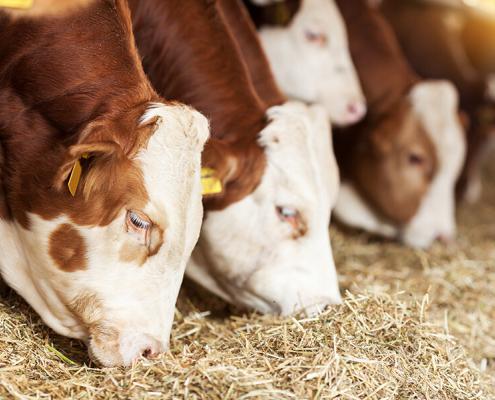 Celtic Sea Minerals
https://celticseaminerals.com/wp-content/uploads/2020/02/koe2.jpg
600
800
Patricia
https://celticseaminerals.com/wp-content/uploads/2020/01/Celtic_13.png
Patricia2020-02-14 21:43:062023-03-02 13:47:50How to prevent rumen acidosis?
Celtic Sea Minerals
https://celticseaminerals.com/wp-content/uploads/2020/02/koe2.jpg
600
800
Patricia
https://celticseaminerals.com/wp-content/uploads/2020/01/Celtic_13.png
Patricia2020-02-14 21:43:062023-03-02 13:47:50How to prevent rumen acidosis?You want to get powered by our science?

Strand Farm
Curraghbinny
Carrigaline
Co.Cork
P43 NN62, Ireland
T: +353 21 437 8377
E: info@celticseaminerals.com
Our marine minerals are fully compliant with the following globally recognised quality assurance schemes:



